So much water this year, the news seems to be inundated with stories of floods and storm surges. Water is taking over, spilling over banks, uniting oceans, seas, rivers… and it is seeping into my art themes once again.
I am into pen and ink once again which takes me back to my days of doing many illustrations for the Brighton based organisation, RiverOcean. In those days my drawings were all about sea creatures and the sea. Well once again my pen and ink drawings are water related but drawn for a small book I’m writing on River, Sea and Moon Goddesses, a theme that I’m especially interested in… back to that underground river that flows beneath my life.
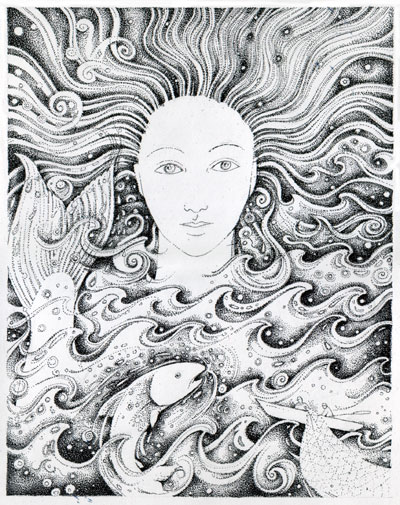
My illustrations here are of perhaps some lesser known goddesses. Take Ved’ava for example, a goddess of the sea or water spirit placated by fishermen of Finno-Ugric peoples. She is sometimes portrayed as a kind of mermaid with a fish tail, playing, singing and seducing humans. If a fishermen saw her it was not a good omen as she was believed to be a drowned person’s spirit.
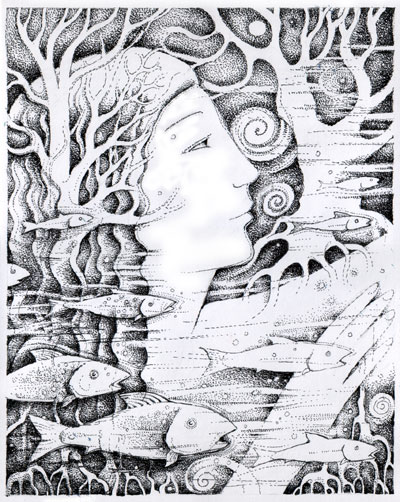
Then here’s Vejama, or Yemoja, she has several names. A goddess of pregnant women and the River Ogun, a river in West Africa, but she is also a goddess with namesakes in other parts of the world. In Brazil, she is Queen of the Ocean and a goddess of fishermen and shipwreck survivors. She is a mother goddess, a fertlity goddess, a spirit of Moonlight too. I wanted to base my pen and ink illustration on the photo collage of my River Goddess, Moanna. I’m not sure it works, what do you think?
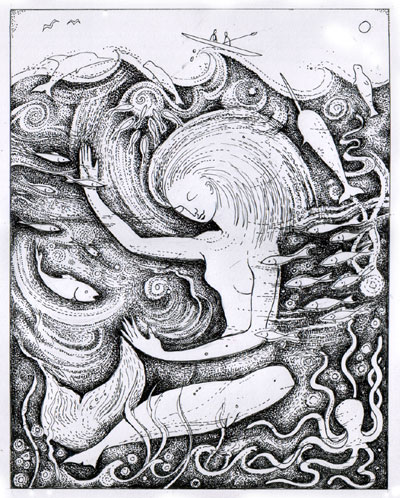
A better-known goddess is Sedna, or Nerrivik, goddess of sea creatures and the Underworld in Inuit mythology. There are various stories about Sedna but most tell of the chopping off of her fingers from which are created the seals, walruses, whales and other marine creatures the Inuit hunt. If angered she withholds the sealife from hunters in her undersea domain and it requires a shaman to metaphorically dive to find her at the bottom of the sea and brush the tangles from her hair to calm her. I am particularly inspired by Inuit culture and myth right now. My goddess still has her hands and she looks a bit wooden so I’ll need to work on her.
This is a ‘taster’ for my book. I’ll be keen to get back to working with colour again soon.
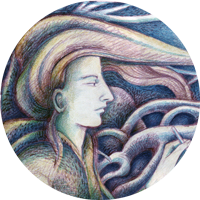
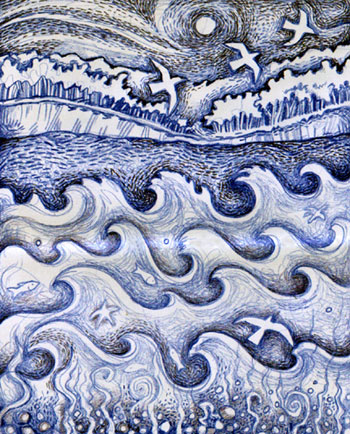
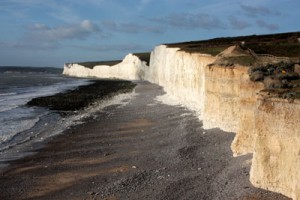
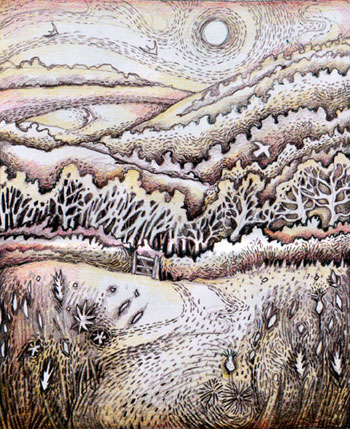
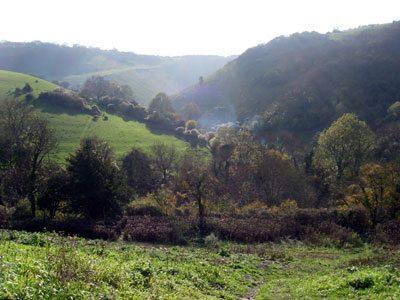
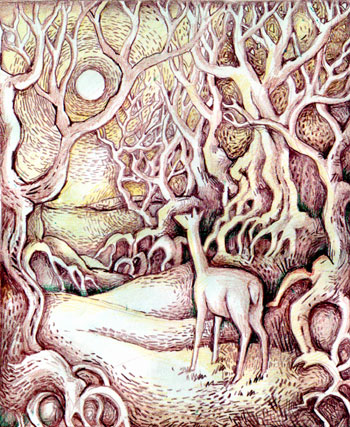
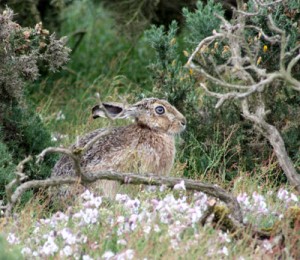 A stay on Havergate Island off the Suffolk Coast in June inspired this piece of creative writing:
A stay on Havergate Island off the Suffolk Coast in June inspired this piece of creative writing: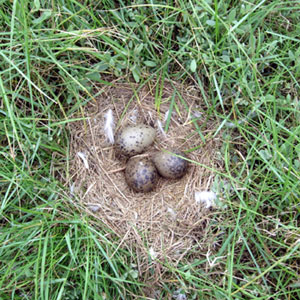 I look down to see a confusion of loose nests, speckled green eggs and huddles of downy chicks, dotted mud-grey and well camoflaged against the grass and splattered ground. I feel a well of excitment seeing nests with eggs and stoop to pick up a broken eggshell embroidered on the inside with a trellis of red veins. I hurry to catch up with Anthony who is fast tracking it through the haze of gulls. They swoop in big arches, their cries deafening. I think I know when they are going to attack as from a distance they fix their gaze intently and then shape to dive bomb. Anthony braces against the attacks and then I receive a vicious kick on the back of my head. I feel the sharpness of feet and beak and know that blood has been drawn. I put up my hood just as a missile of guano splatters my sleeve with chalk white smears.
I look down to see a confusion of loose nests, speckled green eggs and huddles of downy chicks, dotted mud-grey and well camoflaged against the grass and splattered ground. I feel a well of excitment seeing nests with eggs and stoop to pick up a broken eggshell embroidered on the inside with a trellis of red veins. I hurry to catch up with Anthony who is fast tracking it through the haze of gulls. They swoop in big arches, their cries deafening. I think I know when they are going to attack as from a distance they fix their gaze intently and then shape to dive bomb. Anthony braces against the attacks and then I receive a vicious kick on the back of my head. I feel the sharpness of feet and beak and know that blood has been drawn. I put up my hood just as a missile of guano splatters my sleeve with chalk white smears.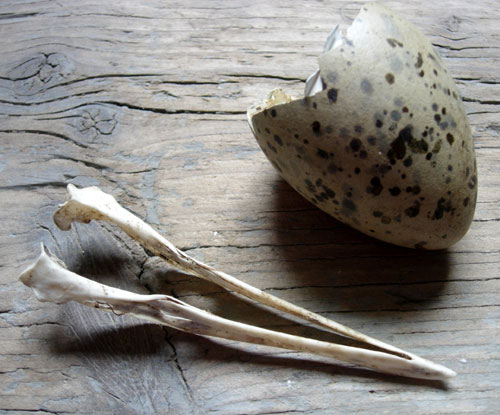
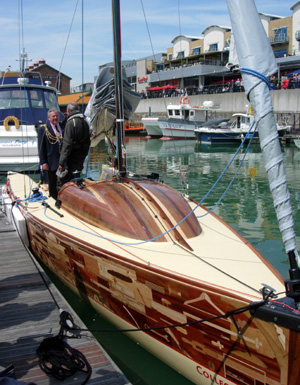
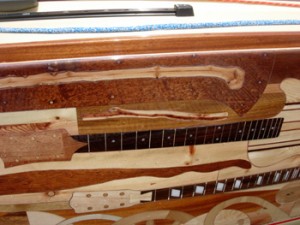
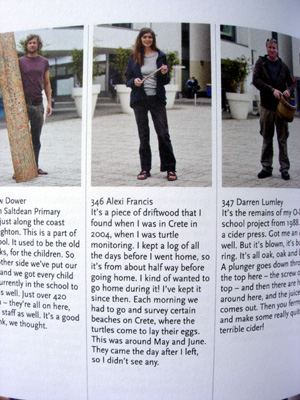
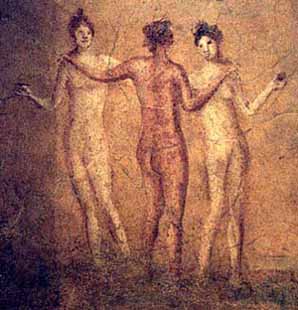
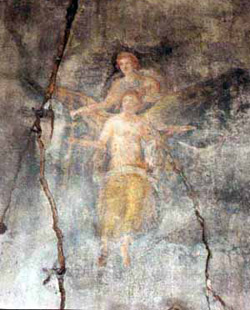 I’ve had a yearning for a faded sort of beauty. Wanting to satisfy my need, I googled angels, caves and frescos and found two roman frescos from Italy that I particularly like. One is of a Winged Figure and the other, The Three Graces.
I’ve had a yearning for a faded sort of beauty. Wanting to satisfy my need, I googled angels, caves and frescos and found two roman frescos from Italy that I particularly like. One is of a Winged Figure and the other, The Three Graces.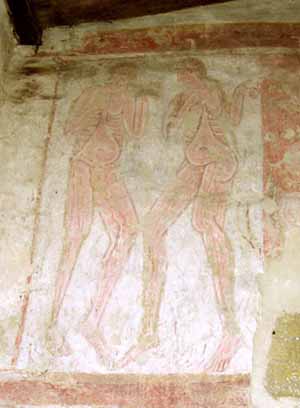
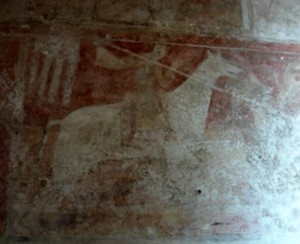
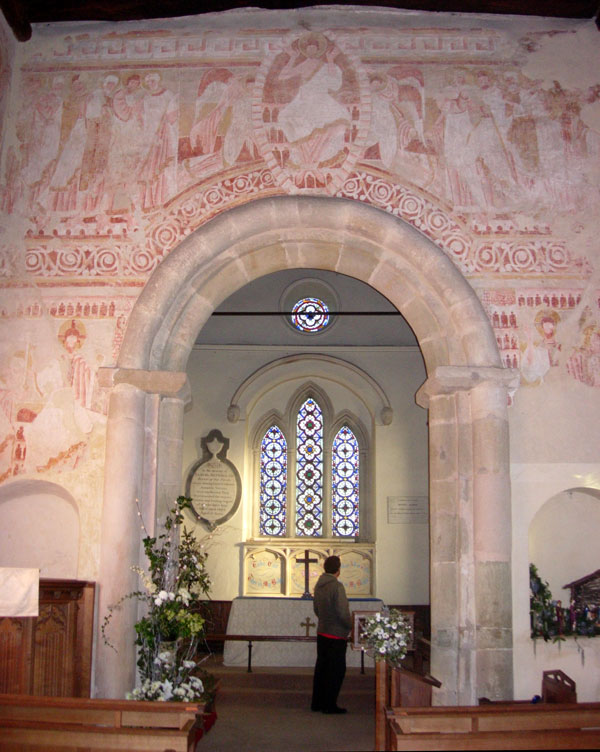
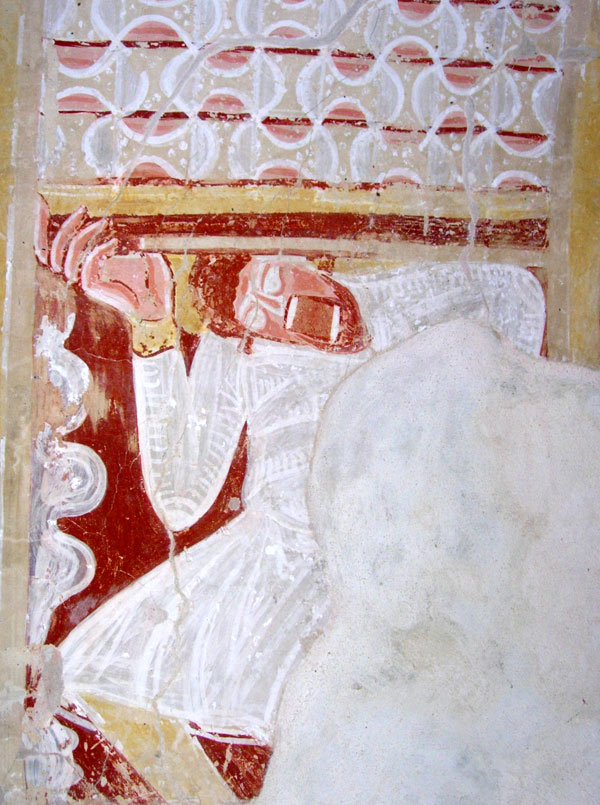
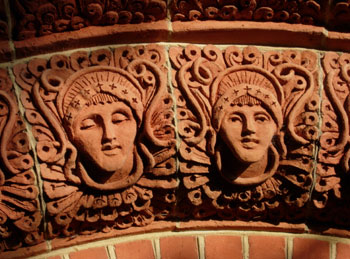
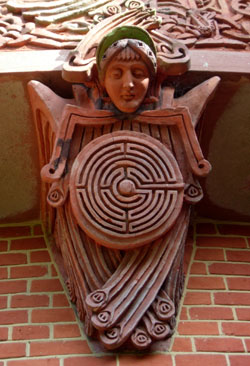
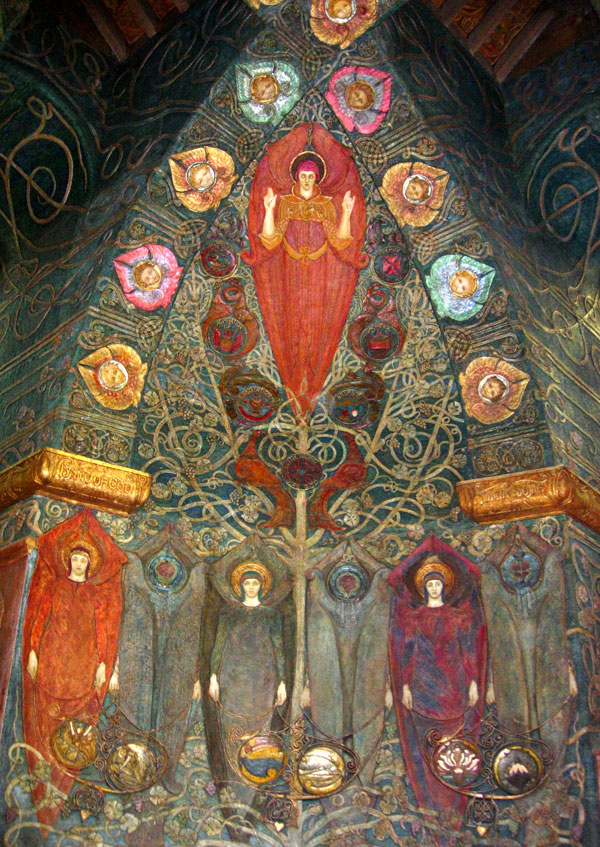
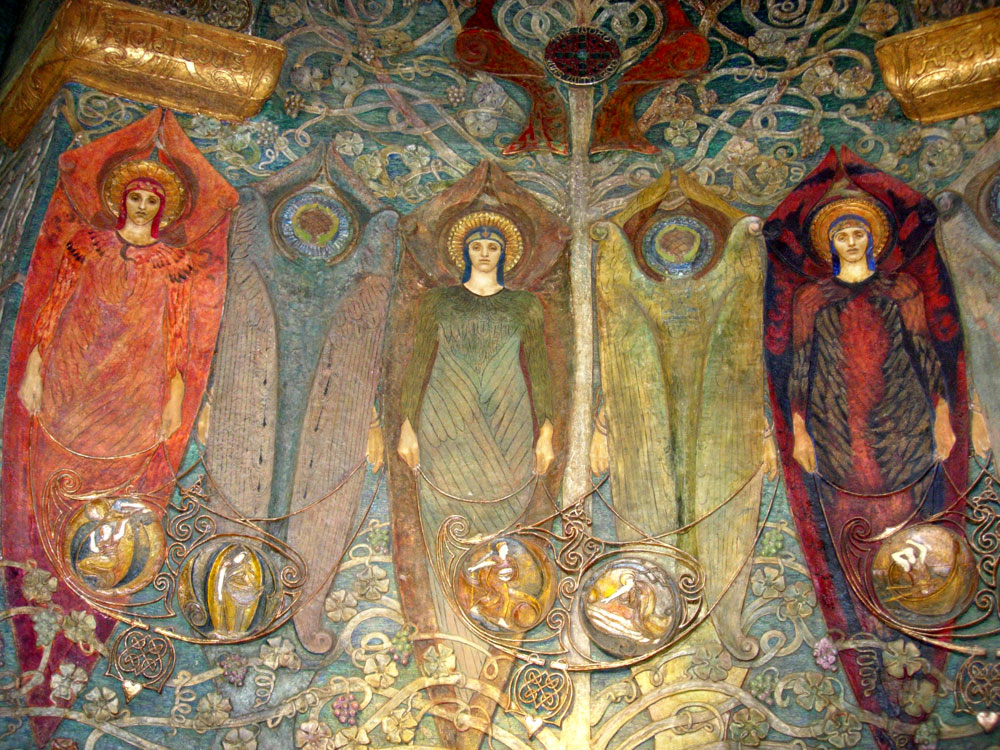
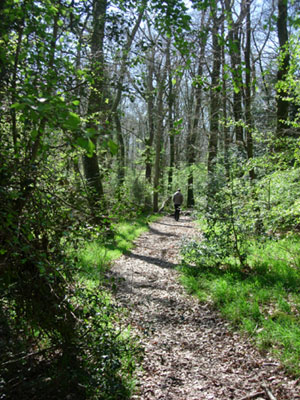 Here in the UK, it’s Spring and I’ve been out in the woods enjoying it. Woodland flowers are blooming and birds are singing their hearts out. A week ago, while wandering a wood near Brighton, I watched as a stoat was chased by some very protective rabbits; it was a real wildlife treat!
Here in the UK, it’s Spring and I’ve been out in the woods enjoying it. Woodland flowers are blooming and birds are singing their hearts out. A week ago, while wandering a wood near Brighton, I watched as a stoat was chased by some very protective rabbits; it was a real wildlife treat!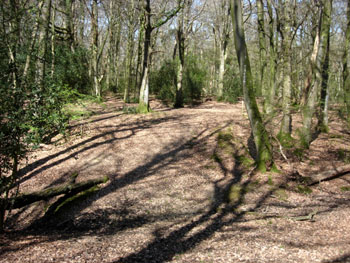 The other day, Kevin and I ventured further to two of my favourite woods in West Sussex,
The other day, Kevin and I ventured further to two of my favourite woods in West Sussex, 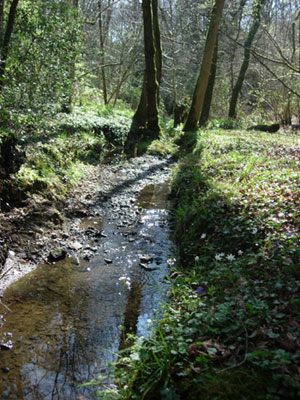 Ebernoe Common is perhaps my favourite wood. It’s here that I come to see woodland butterflies such as
Ebernoe Common is perhaps my favourite wood. It’s here that I come to see woodland butterflies such as 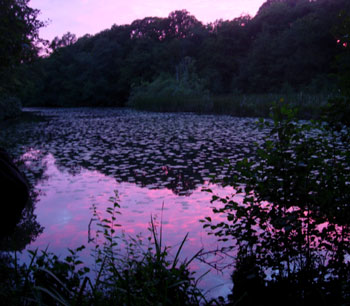
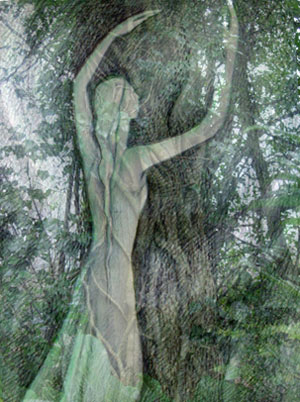
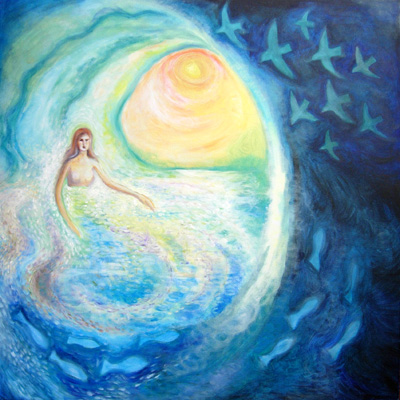 I’ve done a new painting in a style that’s new for me. Kevin says it looks a bit ‘new agey’ and I can perhaps see what he means. It might be the subject matter or the colours, I’m not sure. I have been thinking about gathering birds, swallows in caves and starlings over the pier here in Brighton. They’re like twittering thoughts or memories in the loft of my mind; like a sixth sense telling me something is going to happen; there are dreams ‘waiting in the wings’.
I’ve done a new painting in a style that’s new for me. Kevin says it looks a bit ‘new agey’ and I can perhaps see what he means. It might be the subject matter or the colours, I’m not sure. I have been thinking about gathering birds, swallows in caves and starlings over the pier here in Brighton. They’re like twittering thoughts or memories in the loft of my mind; like a sixth sense telling me something is going to happen; there are dreams ‘waiting in the wings’. 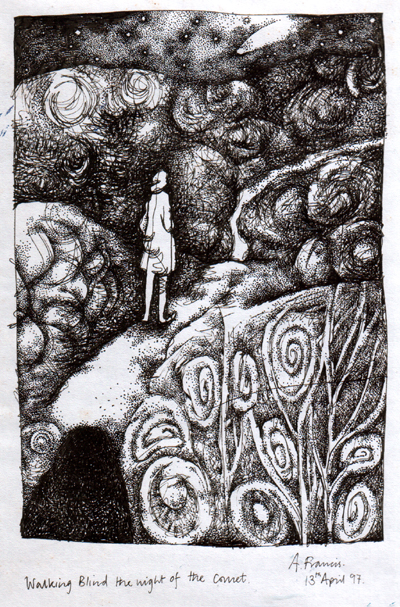
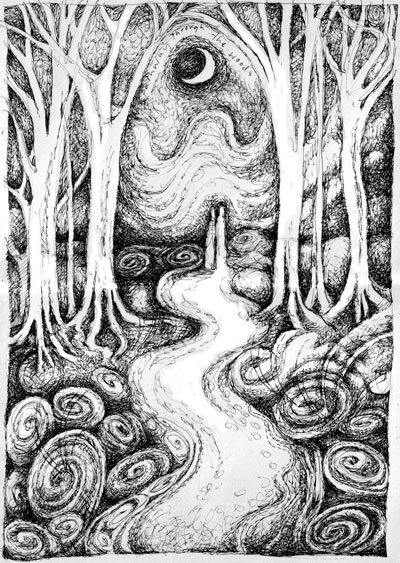 This morning I thought about a pen and ink drawing I did years ago titled “Walking Blind the Night of the Comet”. It’s dated 14th April 1997 so the comet must have been
This morning I thought about a pen and ink drawing I did years ago titled “Walking Blind the Night of the Comet”. It’s dated 14th April 1997 so the comet must have been 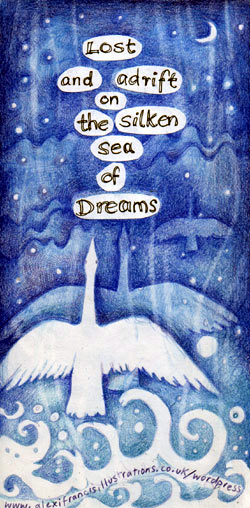
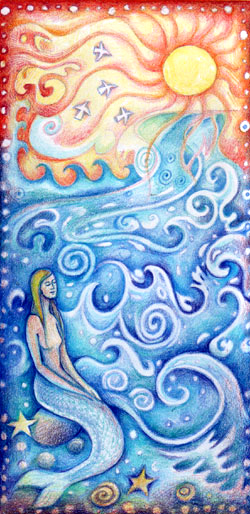 While in Nepal, I buried a little packet a friend gave me on top of Poon Hill under the gaze of the Dhauligiri Massif. Now my friend will be taking a voyage back across the Atlantic from Brazil, a true dream trip. When she goes, I’ll be giving her a gift to the ocean, a bottle with a picture inside that I hope will be washed up and found one day. She said she’ll drop it in the mid Atlantic so it might get caught by the
While in Nepal, I buried a little packet a friend gave me on top of Poon Hill under the gaze of the Dhauligiri Massif. Now my friend will be taking a voyage back across the Atlantic from Brazil, a true dream trip. When she goes, I’ll be giving her a gift to the ocean, a bottle with a picture inside that I hope will be washed up and found one day. She said she’ll drop it in the mid Atlantic so it might get caught by the 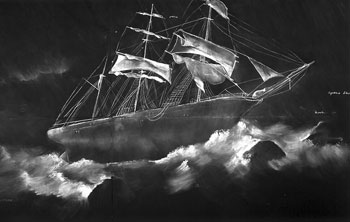 I have been musing on loss and ‘lost’ recently, (especially after reading Rebecca Solnit’s Field Guide to Getting Lost.) I’ve also been adrift on an unknown sea of ships, wrecks, dreams and memories. While drawing the little picture for the bottle, I thought of my mother and how I would draw little pictures for her. I guess my mother is connected to the sea and loss, dreams and all those fragmented memories that keep coming back to me. Perhaps that’s why I’m looking into the artwork of
I have been musing on loss and ‘lost’ recently, (especially after reading Rebecca Solnit’s Field Guide to Getting Lost.) I’ve also been adrift on an unknown sea of ships, wrecks, dreams and memories. While drawing the little picture for the bottle, I thought of my mother and how I would draw little pictures for her. I guess my mother is connected to the sea and loss, dreams and all those fragmented memories that keep coming back to me. Perhaps that’s why I’m looking into the artwork of 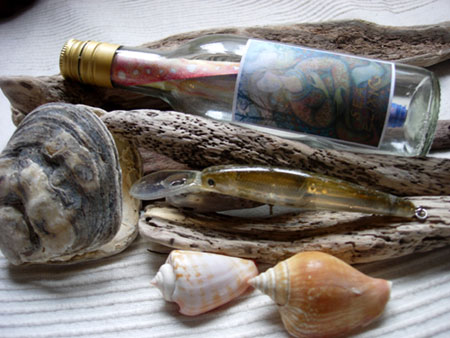
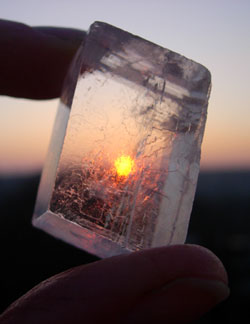 During an online search I learnt about the crystal
During an online search I learnt about the crystal